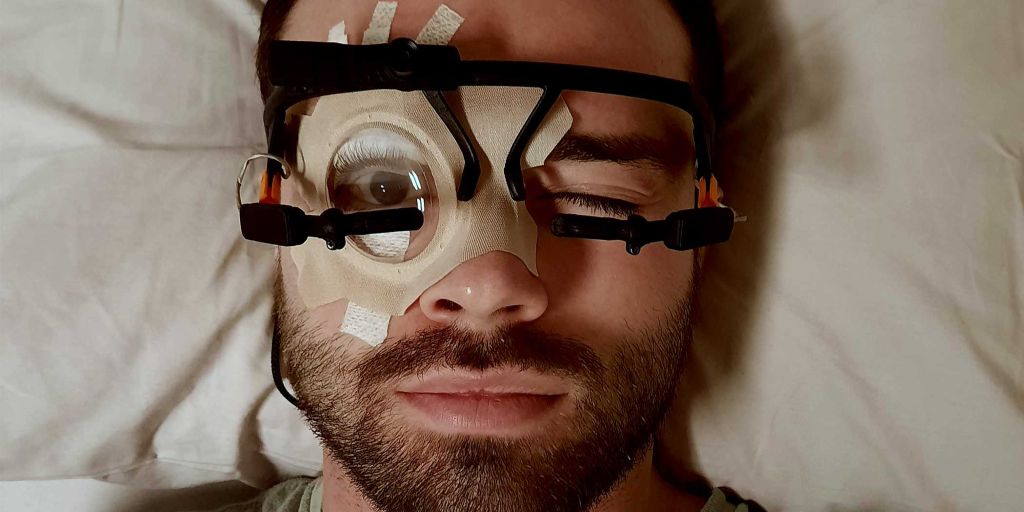What Does Caffeine Do to the Sleeping Brain?

Caffeine is one of the most widely consumed psychoactive substances in the world, present in tea, coffee, chocolate and energy drinks. In a study published in Nature Communications Biology, a team of researchers from Université de Montréal shed new light on how caffeine can modify sleep and influence the brain’s recovery, both physical and cognitive, overnight.
The research was led by Philipp Thölke, a research trainee at UdeM’s Cognitive and Computational Neuroscience Laboratory (CoCo Lab), and co-led by the lab’s director Karim Jerbi, a psychology professor and researcher at Mila – Quebec AI Institute.
Working with sleep-and-aging psychology professor Julie Carrier and her team at UdeM’s Centre for Advanced Research in Sleep Medicine, the scientists used AI and electroencephalography (EEG) to study caffeine’s effect on sleep.
They showed for the first time that caffeine increases the complexity of brain signals and enhances brain “criticality” during sleep. Interestingly, this was more pronounced in younger adults.
“Criticality describes a state of the brain that is balanced between order and chaos,” said Jerbi.
“It’s like an orchestra: too quiet and nothing happens, too chaotic and there’s cacophony. Criticality is the happy medium where brain activity is both organised and flexible. In this state, the brain functions optimally: it can process information efficiently, adapt quickly, learn and make decisions with agility.”
Added Carrier: “Caffeine stimulates the brain and pushes it into a state of criticality, where it is more awake, alert and reactive. While this is useful during the day for concentration, this state could interfere with rest at night: the brain would neither relax nor recover properly.”
Nocturnal brain activity
To study how caffeine affects the sleeping brain, Carrier’s team recorded the nocturnal brain activity of 40 healthy adults using an electroencephalogram. They compared each participant’s brain activity on two separate nights, one when they consumed caffeine capsules three hours and then one hour before bedtime, and another when they took a placebo at the same times.
“We used advanced statistical analysis and artificial intelligence to identify subtle changes in neuronal activity,” said Thölke, the study’s first author. “The results showed that caffeine increased the complexity of brain signals, reflecting more dynamic and less predictable neuronal activity, especially during the non-rapid eye movement (NREM) phase of sleep that’s crucial for memory consolidation and cognitive recovery.”
The researchers also discovered striking changes in the brain’s electrical rhythms during sleep: caffeine attenuated slower oscillations such as theta and alpha waves (generally associated with deep, restorative sleep) and stimulated beta wave activity, which is more common during wakefulness and mental engagement.
“These changes suggest that even during sleep, the brain remains in a more activated, less restorative state under the influence of caffeine,” says Jerbi, who also holds the Canada Research Chair in Computational Neuroscience and Cognitive Neuroimaging. “This change in the brain’s rhythmic activity may help explain why caffeine affects the efficiency with which the brain recovers during the night, with potential consequences for memory processing.”
People in their 20s more affected
The study also showed that the effects of caffeine on brain dynamics were significantly more pronounced in young adults between ages 20 and 27 compared to middle-aged participants aged 41 to 58, especially during REM sleep, the phase associated with dreaming.
Young adults showed a greater response to caffeine, likely due to a higher density of adenosine receptors in their brains. Adenosine is a molecule that gradually accumulates in the brain throughout the day, causing a feeling of fatigue.
“Adenosine receptors naturally decrease with age, reducing caffeine’s ability to block them and improve brain complexity, which may partly explain the reduced effect of caffeine observed in middle-aged participants,” Carrier said.
And these age-related differences suggest that younger brains may be more susceptible to the stimulant effects of caffeine. Given caffeine’s widespread use, the researchers stress the importance of understanding its complex effects on brain activity across different age groups and health conditions.
They add that further research is needed to clarify how these neural changes affect cognitive health and daily functioning, and to potentially guide personalised recommendations for caffeine intake.
Source: University of Montreal



